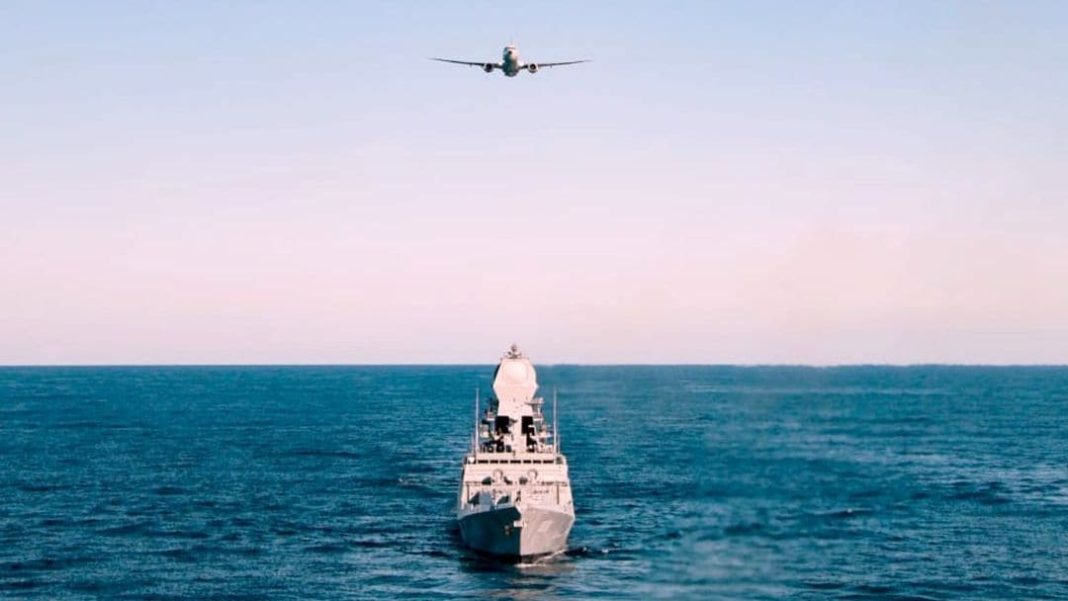India’s maritime frontier is experiencing a significant technological revolution that promises to reshape its naval capabilities. As one of the world’s rapidly growing economies, India is increasingly focusing on self-reliance and innovation in its maritime strategy, particularly in the Indo-Pacific region.
The Indian Navy, responsible for safeguarding the country’s extensive coastline and vital sea routes, is evolving into a more advanced and agile force. This transformation aligns with the central government’s vision of ‘Aatmanirbhar Bharat’ or Self-Reliant India, driving enhanced naval capabilities to confront both present and future maritime challenges.
Technological advancements, spanning from artificial intelligence (AI) to cyber security and indigenous innovation, play a crucial role in the navy’s modernization efforts. With over 90% of India’s trade by volume and 70% by value passing through the seas, the Indian Ocean Region (IOR) is a critical component of national security. However, this region faces numerous challenges, including piracy, territorial disputes, and escalating cyber threats, compounded by geopolitical tensions arising from China’s growing naval presence.
In response, the Indian Navy is undergoing a comprehensive modernization, underpinned by technological innovation. Key to this strategy is the integration of AI into its operations. The navy’s combat management system has been significantly enhanced through AI, enabling real-time processing of vast amounts of data from various sensors. This development allows for quicker threat detection and response, enhancing situational awareness and operational effectiveness.
AI also plays a vital role in predictive maintenance of naval equipment, reducing mission downtime by monitoring the health of machinery and forecasting potential failures. This proactive approach ensures that naval vessels remain fully operational during extensive patrols, further strengthening India’s maritime security framework.
Moreover, the navy is harnessing AI for maritime surveillance, analyzing satellite imagery and drone data to monitor activities such as illegal fishing and unauthorized intrusions. Such capabilities greatly improve situational awareness, allowing the navy to address both conventional and asymmetric threats decisively.
Unmanned systems are redefining the operational strategy of the Indian Navy. The introduction of autonomous platforms, like the Neerakshi autonomous underwater vehicle developed by Garden Reach Shipbuilders & Engineers, exemplifies this shift. Designed for underwater reconnaissance and mine detection, these unmanned vehicles enhance the navy’s intelligence and surveillance capabilities without putting personnel at risk. Similarly, the Autonomous Fast Interceptor Boat (AFIB) offers high-speed patrolling capabilities while operating autonomously, improving monitoring of key maritime chokepoints.
As the navy develops its capabilities, the use of drone swarms and unmanned aerial systems is expanding, allowing for effective, low-cost surveillance and reconnaissance. These advanced technologies aim to create a versatile naval force capable of operations across surface, air, and underwater domains.
Communication technologies are also advancing within the Indian Navy, with deployments of Software-Defined Radios (SDRs) enabling secure, real-time communication across varying frequency bands. The introduction of the Link II Next Generation data link system ensures high-speed data transfer among vessels, facilitating seamless, network-centric operations and coordinated responses to emerging threats.
Another effort demonstrating the navy’s commitment to innovation is the Swavlamban initiative, which showcases new technologies developed through collaborations with Indian startups and MSMEs. The event featured over 75 new defense products, focusing on autonomous systems, AI, and military communications, reflecting the navy’s drive for indigenization and innovation.
Cyber security remains a priority, given the increasing reliance on digital infrastructure in naval operations. The navy’s Weapons and Electronics Systems Engineering Establishment has developed advanced encryption tools to secure its communications, with future investments in quantum-safe algorithms poised to protect against next-generation threats.
Despite these advancements, the Indian Navy faces challenges, including the need for robust policy support and funding to scale up the production of advanced technologies. Additionally, training personnel to operate and maintain these sophisticated systems is crucial, as the complexity of AI and automation demands specialized expertise.
Looking forward, the Indian Navy’s technological transformation encapsulates its alignment with the ‘Aatmanirbhar Bharat’ vision. By fostering a culture of innovation and integrating cutting-edge technologies, the navy aims to secure India’s maritime interests while positioning itself as a formidable power in the global arena.
The journey toward modernization and self-reliance is ongoing, with the Indian Navy setting benchmarks for maritime forces worldwide. Through its commitment to innovation and strategic foresight, the navy is not only strengthening defense capabilities but also ensuring India’s influential presence in an increasingly complex maritime environment across the Indo-Pacific and beyond.





